 Back to the Be Inspired Blog
Back to the Be Inspired Blog
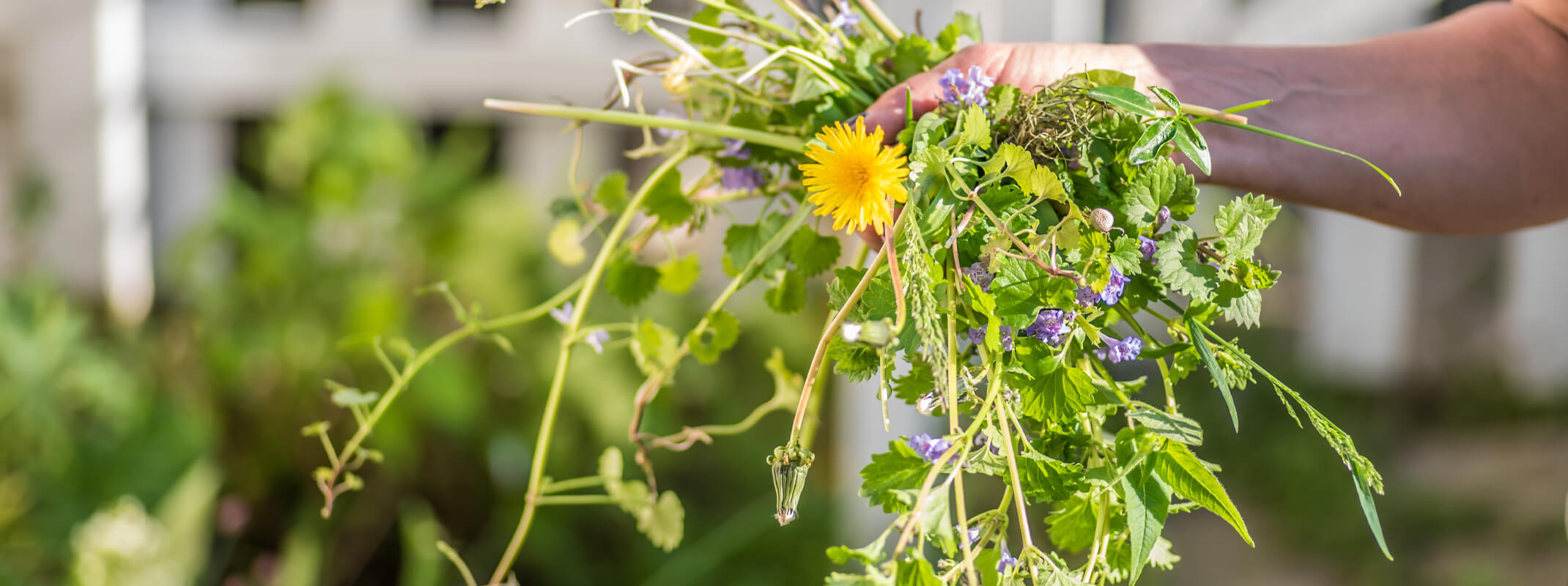
Common Garden Weeds: Learn How to Identify and Rid Your Garden of Them (Naturally)
When you work hard in your garden, it’s rewarding to watch everything flourish—until uninvited guests show up. Weeds can become a major nuisance, especially in the Bay Area’s mild climate, where many can thrive almost year-round. The key is identifying weeds early and removing them promptly, using eco-friendly methods to protect pollinators, soil health, and the environment.
Below are ten common weeds you might encounter in your garden, grouped into Grassy Weeds and Broadleaf Weeds for easy reference. We’ve included natural control methods that avoid chemical herbicides.
Grassy Weeds
1. Crabgrass (Digitaria sanguinalis)
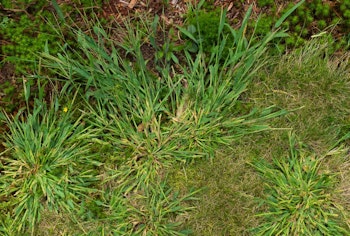
- Identification: Low-growing, sprawling grass with thick, finger-like seed heads. Appears in late spring and thrives in thin or patchy lawns.
- Life Cycle: Annual weed that germinates in warm weather.
- Natural Control:
- Prevention: Keep your lawn healthy and dense—regular mowing, proper fertilization, and deep watering help turf outcompete crabgrass.
- Hand-Pulling: Remove young plants before they go to seed, ensuring the entire root is pulled.
- Mulch: In garden beds, use a thick layer of organic mulch to block sunlight and discourage seed germination.
2. Bermuda Grass (Cynodon dactylon)
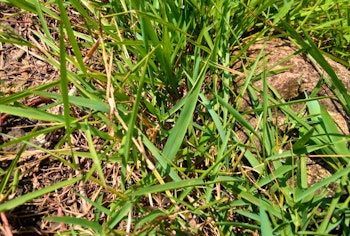
- Identification: Tough, wiry grass with fine, narrow leaves and deep, extensive root systems.
- Life Cycle: Perennial; spreads by seeds and creeping rhizomes.
- Natural Control:
- Solarization: Cover infested areas with clear plastic during the hottest months to “bake” and kill roots.
- Smothering: Layer cardboard or thick newspaper plus mulch on top to block sunlight.
- Persistent Removal: Repeatedly dig out any remaining runners or rhizomes to prevent regrowth.
3. Foxtail (Setaria spp.)
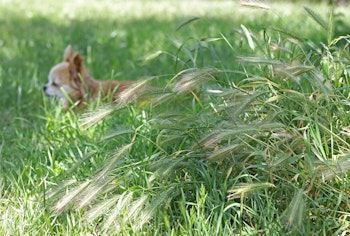
- Identification: Grassy weed with foxtail-shaped seed heads that easily cling to pet fur and clothing.
- Life Cycle: Annual; thrives in disturbed or neglected areas.
- Natural Control:
- Healthy Lawn: Foxtail struggles to establish in a dense, well-maintained lawn.
- Hand-Pull Young Plants: Pull soon after rain, when the soil is softer.
- Natural Pre-Emergent: Corn gluten meal can be applied in early spring to reduce seed germination.
4. Quackgrass
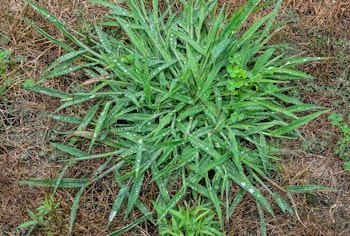
- Identification: Creeping, persistent perennial grass with long, jointed, straw-colored rhizomes.
- Life Cycle: Perennial; reproduces by seeds and aggressive rhizomes.
- Natural Control:
- Dig Out Completely: Remove the entire rhizome system as soon as you spot it; any leftover piece can regrow.
- Barrier Methods: In garden beds, use thick layers of newspaper or cardboard plus mulch to suppress growth.
Broadleaf Weeds
5. Dandelions (Taraxacum officinale)
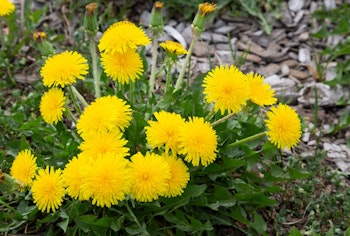
- Identification: Bright yellow flowers turning into fluffy seed heads; long taproot.
- Life Cycle: Perennial; seeds spread easily on the wind.
- Natural Control:
- Hand-Pulling: Use a dandelion puller or a narrow weeding tool to remove the entire taproot.
- Mulch: In garden beds, mulch around plants to prevent seeds from sprouting.
6. Purslane (Portulaca oleracea)
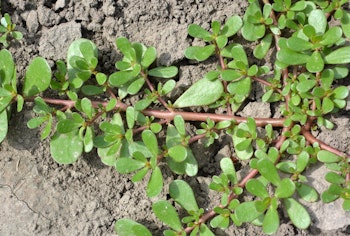
- Identification: Low-growing succulent with reddish stems and fleshy, oval leaves.
- Life Cycle: Annual, but it can quickly drop seeds that remain viable for years.
- Natural Control:
- Pull When Young: Remove by hand or hoeing before seed set. The shallow roots make it relatively easy to pull.
- Mulch Heavily: A thick layer of organic mulch in landscape beds blocks sunlight and discourages germination.
7. Oxalis/Wood Sorrel (Oxalis spp.)
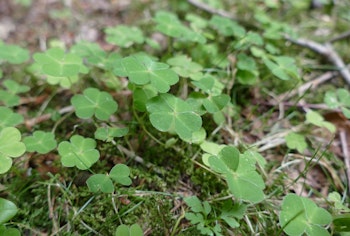
- Identification: Clover-like leaves with yellow or pinkish flowers, plus small underground bulbs.
- Life Cycle: Perennial; spreads via bulbs and seeds.
- Natural Control:
- Persistent Hand-Pulling: Carefully remove bulbs to reduce regrowth.
- Mulch: Maintain a thick layer of mulch to block new seedlings.
8. Clover (Trifolium repens)
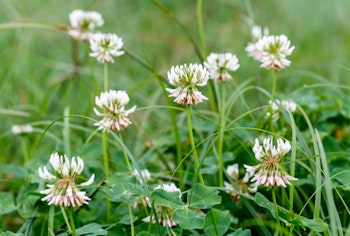
- Identification: Three-part leaves (often with a lighter “V” marking) and white or pinkish flowers.
- Life Cycle: Perennial in most climates; fixes nitrogen in soil.
- Natural Control:
- Accept or Remove: Clover can benefit lawns by fixing nitrogen, but if you prefer pure turf, maintain healthy soil and mow a bit higher so grass outcompetes clover.
- Hand-Pulling: Effective in small patches, especially when the soil is moist.
9. Spurge (Euphorbia spp.)
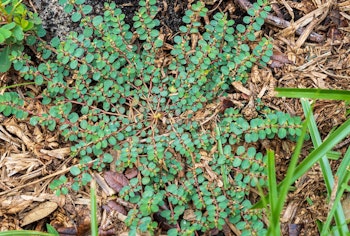
- Identification: Low-growing plant with a milky, irritating sap. Leaves often have a reddish spot in the center.
- Life Cycle: Can be annual or perennial; spreads by seeds.
- Natural Control:
- Wear Gloves: Sap can irritate skin. Pull or hoe spurge when it’s young and before it flowers.
- Mulch & Smothering: Use cardboard, newspaper, or organic mulch to block sunlight and reduce germination.
10. Chickweed
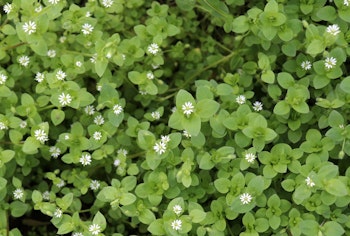
- Identification: Two main types:
- Mouse-ear Chickweed: Perennial, with fuzzy leaves that form dense mats.
- Common Chickweed: Annual, more delicate with smoother leaves.
- Life Cycle: Mouse-ear is perennial; common chickweed is annual.
- Natural Control:
- Hand-Pull or Hoe: Remove before seed set, ensuring the entire root is out (especially for mouse-ear chickweed).
- Maintain a Healthy Lawn: Mow at the recommended height for your grass type, and water deeply but infrequently to encourage stronger turf roots.
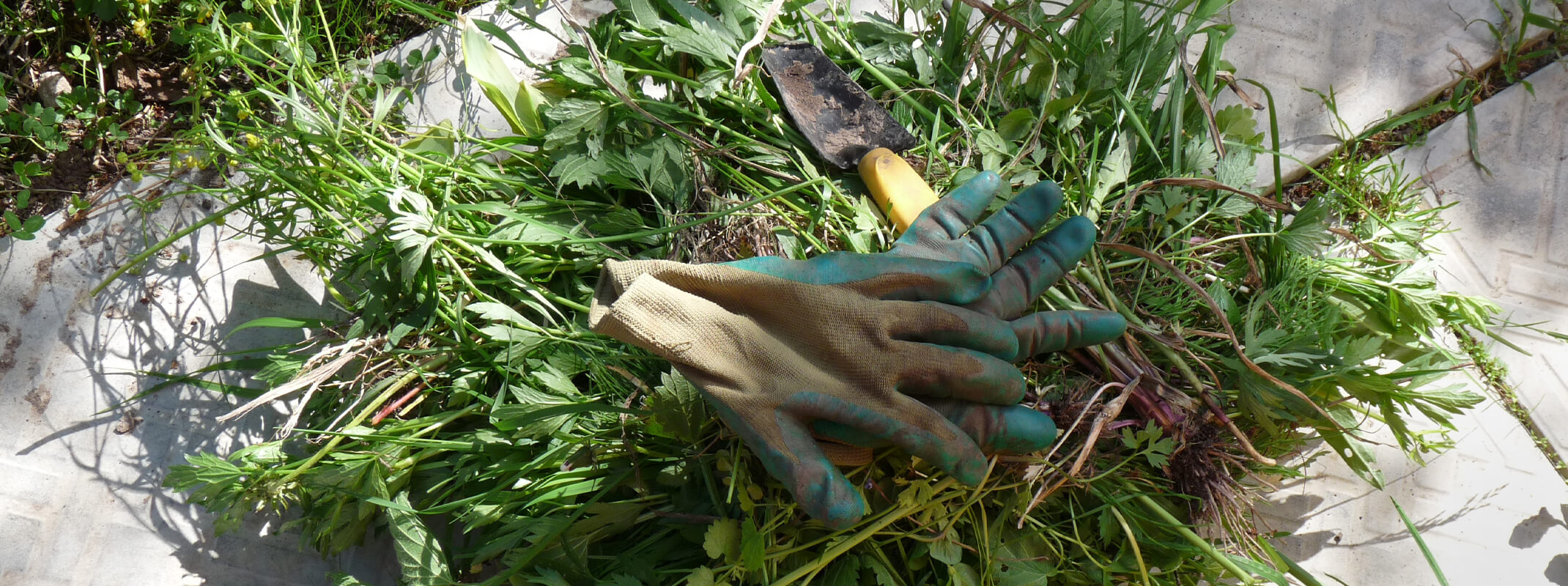
Eco-Friendly Weed Control Strategies
To keep your garden chemical-free, try these proven natural methods:
- Newspaper or Cardboard Smothering: Lay down several layers of newspaper or cardboard over weedy areas. Wet it to keep in place, then top with mulch. This blocks sunlight and oxygen, smothering existing weeds and preventing new ones from sprouting. Over time, these layers decompose and enrich the soil.
- Corn Gluten Meal: This natural by-product of corn processing can act as a pre-emergent, preventing seeds from germinating. Apply it in early spring or fall—just make sure your desired seedlings and transplants are already established, as it can affect all seeds.
- Soap Sprays: Adding a few drops of liquid dish soap to vinegar or vodka sprays helps break down the protective surfaces on weed leaves, making them more vulnerable to dehydration. Apply on sunny, warm days for the best effect.
- Boiling Water: Great for cracks in driveways or walkways—pouring boiling water directly on weeds causes them to wilt and die. Just be cautious around desirable plants, as the scalding water can damage anything it touches.
- Solarization: In the Bay Area’s sunny months, cover weed-infested soil with clear plastic for several weeks. The heat trapped underneath “bakes” the weeds and many of their seeds, leaving the area ready for replanting.
- Weed Gardening Tools:

 There’s a uniquely therapeutic satisfaction in pulling out invasive weeds and then stepping back to admire the beauty of your garden. At SummerWinds Nursery, we’re excited to introduce our new line of eco-friendly gardening tools designed to make weed removal both efficient and enjoyable.
There’s a uniquely therapeutic satisfaction in pulling out invasive weeds and then stepping back to admire the beauty of your garden. At SummerWinds Nursery, we’re excited to introduce our new line of eco-friendly gardening tools designed to make weed removal both efficient and enjoyable.
- Crevice Weeder: Featuring a sharp, precision edge, it’s ideal for removing stubborn weeds and scraping moss from tight spaces between pavers or garden beds.
- Weeding Fork: With its sharp, Y-shaped tip, it’s perfect for extracting weeds like dandelions, horse grass, and duckweed—allowing you to gently uproot them without disturbing the surrounding soil.
Timing and Bay Area Considerations
- Winter and Early Spring: Many weeds germinate after winter rains. Begin removing weeds as soon as you see them.
- Summer: Warm-weather weeds like crabgrass and foxtail thrive in hot conditions. Use preventive measures (mulch, corn gluten meal) in late spring to curb summer outbreaks.
- Year-Round Vigilance: The Bay Area’s mild climate means weeds can appear any time. Inspect your garden regularly, and remove small weeds before they mature and spread seeds.
By combining proper identification, consistent cultural practices (like mulching and maintaining healthy soil), and targeted natural methods, you can keep weeds at bay—while preserving the beauty and ecological balance of your Bay Area garden. Focusing on prevention and gentle removal strategies often yields the best long-term results without resorting to harsh chemicals.

